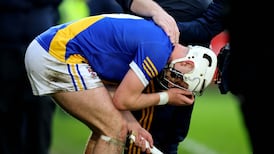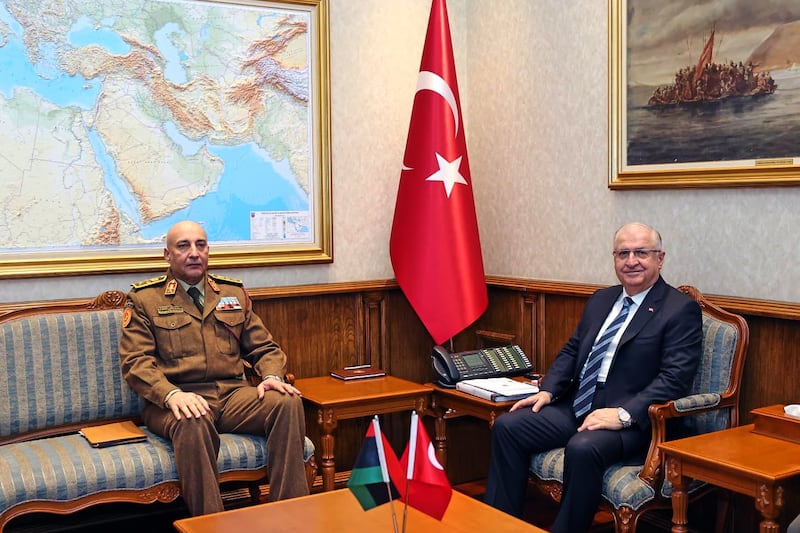It's one of the great conversational set pieces of the build-up to an All-Ireland but what are the mechanics for administrators in distributing the tickets in the competing counties? The one certainty they all have to deal with is that there will be more applicants than actual product when the tickets are sent out to the clubs.
Unlike All-Ireland semi-finals for which the tickets are divided between the competing counties, the finals are regarded as national occasions, belonging to everyone in the GAA.
When the idea is floated that competing counties should get most if not all of the allocations, it will be argued that some counties won’t ever reach the big day and but for the current distribution system would never get to attend finals.
Neither of the senior finalists are reporting any impact on demand of the price increase of tickets from €80 to €90 this year although one administrator believes that pricing may have to be looked at if capacity attendances are to be maintained into the future given certain vulnerabilities, such as the repetitive nature of final pairings in hurling and the ongoing domination of football by Dublin.
For both Dublin and Kerry, there are categories of applicants, such as players – past and present – and those supporters who have a right to a ticket through various schemes.
Allocation
For instance in Dublin, those holding a Parnell Park pass are entitled to get one ticket and those – roughly, 2,000 – come from the county’s total.
So too do those who subscribe to Croke Park’s season ticket, which at the cost of €120 gets one person into their county’s league matches and first championship fixture with discounts for certain of the subsequent matches and – crucially – the right to purchase an All-Ireland final ticket if your county qualifies.
In Dublin’s case there is always the maximum take-up of 3,500 on these and those All-Ireland entitlements come off the top of the county’s allocation.
Those allocations are in the region of 13,000 per competing county – regardless of size so Dublin don’t get any more than Kerry based on population.
The precise numbers being reserved for the All-Ireland finalists used to be published in the GAA’s annual report but in the past 10 years has been replaced with a global figure for counties, which last year came to 59,196 out of the capacity of 82, 300.
It is believed though that the numbers haven’t changed since 2008, the last year they were separately detailed. That came to 31,704. The reason for the discrepancy between that and 26,000 (two allocations of 13,000) is that each year, a supplementary distribution takes place and varies according to the returns sent back from non-competing counties.
There is also the number that competing minor finalists get, believed to be about 3,000 between them. A county in both senior and minor finals, like Kilkenny in this year’s hurling, will get an enhanced allocation but on Sunday there are four separate counties present, Dublin, Kerry, Cork and Galway.
The senior counties handle their respective distributions slightly differently. Kerry try to give each club 100 tickets and then with what’s left and any supplementary distribution, top up clubs with bigger memberships. There are 68 clubs in the county.
In Dublin, with its 91 units, the system is more structured. Clubs are divided into tiers. Tier 1 contains the biggest clubs, tier 2 the medium-sized and tier 3, the smallest. The county board assesses clubs on the basis of the number of teams they field but that metric more or less equates to membership numbers in most cases.
The first tier gets between 100 and 120 tickets, the second 50 to 60 and the third about 20.
Demand
How clubs distribute the tickets is up to them but the bulk of them, except in maybe the smallest clubs are decided by a draw with members entering in the hope of getting lucky – and luck will come into it, as the Dublin’s tier 1 clubs can have thousands of members although in practice, the draw will be restricted to adult members.
All clubs reserve a certain number for officer boards, team mentors and members, who volunteer specialist services during the year. In the smaller clubs there may not be much left over for a general draw.
Some use a portion of their allocation to raise funds for special projects but such schemes aren’t practical except on a limited basis, as demand among members is so strong.
Counties have been known to charge a levy on tickets for fund raising and Kerry earlier this month denied that an additional €10 being charged to support a players’ holiday fund was compulsory.
There are other categories to be provided for: in both Kerry and Dublin, player entitlements are on the rise because of bigger training panels and although both restrict eligibility of former players to All-Ireland medallists – a sizeable population in Kerry and one that is growing in Dublin.
There are also people who have been helpful on local authorities – a particular phenomenon in Dublin where many clubs are totally reliant on council pitches and where there are four municipal authorities with which to interact – and sponsors.
One difference is that in Kerry, the distribution has to take place earlier because of the need to plan travel and in some cases, accommodation arrangements. Some Dublin clubs still haven’t completed their draws, as their members are ready to go.


















